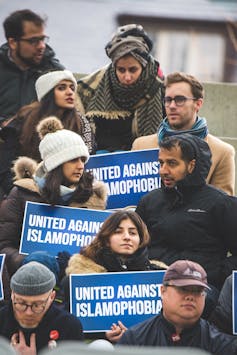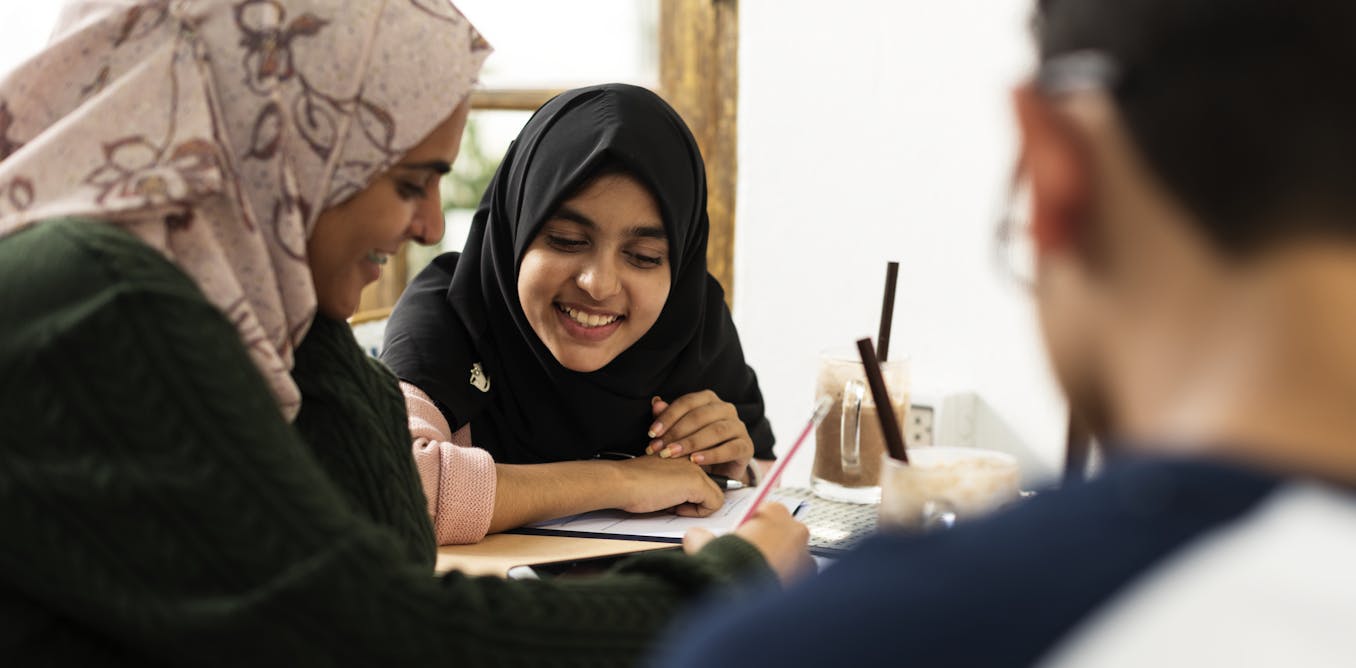[ad_1]
The recent open attacks on Muslims in London, Ontario, Hamilton and Edmonton have surfaced and exacerbated the fear that Canadian Muslims have lived with for many years.
A few weeks ago I visited a friend. I was about to knock when her daughter opened the door and told me that she had gone for ice cream with her friend. She said “Goodbye!” and left his house without his hijab. I was heartbroken. Even though my friend lives in part of Missisauga, Ontario, a densely populated Muslim city in Canada (also ironically called by its Muslim residents “Muslim-sauga”), she and her three daughters do not feel safe.
They are afraid of being visibly Muslim for fear of being identified and targeted for their religion.
I am an anti-Islamophobia researcher and educator with a primary focus on Islamophobia in schools. My research suggests that Islamophobia doesn’t just manifest itself in isolated incidents or overt attacks. Islamophobia frequently manifests itself in secret ways.
Seemingly innocuous attitudes
Here are five seemingly harmless attitudes that educators and school communities can learn to spot and correct.
1. “I treat all students the same†or “I don’t see the color. “ A comment I often hear from teachers and administrators is “I don’t always know Muslim students as Muslims,†or “All students are the same,†or “I don’t see any color. When I probe and ask more questions, I notice that the fear of being perceived as an Islamophobe or of harboring Islamophobic feelings is camouflaged and shrouded in such statements. Research shows that treating students the same means that all students receive the same treatment, regardless of their needs.
Having a “color blind” approach is rooted in the notion that being “different” is a deficit. Focusing on “same processing†and “color blind processing†means covering up implicit biases.
Read more: How to Combat Anti-Black Racism in Canadian Schools
2. “Muslims in Canada are more respectful and civilized than Muslims in other parts of the world. In my doctoral research, I explored the experiences of Muslim students at an urban public high school in Ontario known for its strong Muslim student presence. I have found that teachers generally have positive relationships with Muslims in their school communities. Yet something strange happens when they treat the too often negative accounts of Muslims in the media as suspect, dangerous and backward.
A teacher I interviewed for my research asserted that Muslims living in Canada are very different from Muslims outside of Canada. Such views reflect and reproduce what literary and cultural critic Edward Said has identified as an “orientalist” and colonial narrative that living in the West (in this case, Canada) “civilizes” Muslims.
(Pexels / Harun Benli)
3. Muslim students are considered to be the spokespersons of their religion. Just as Muslim organizations are supposed to be the first to condemn any terrorist attack, Muslim students are also called to condemn attacks, defend their faith and speak for their faith: “Does Islam oppress them? women? What does Islam say about homosexuality? Why are “Muslim†countries in such disarray?
Likewise, a teacher concerned about the academic integrity of students asked me, “… does the Qur’an say cheating is okay?” Because in most religions it is not fair. The teacher could not imagine that a student who wore a hijab could also cheat in his class. The pressure to represent an entire religion, in its best form, is a daunting task for an adult, let alone a student.
4. Conflicting and dangerous Islamophobic narratives. Such repeated accounts in the media have a very strong hold on the societal psyche and negatively affect Muslims.
Some of the very first questions asked of a visible Muslim student are: “Did your husband / father force you to wear the hijab?” Is your father / husband strict or controlling? And whatever the answer, students feel that some teachers will not change their thinking, regardless of the evidence presented.
Another example that I came across in my research is when a student spoke about his teacher. The pupil declared that the teacher “is fair in everything”. But when it comes to topics like Islam and terrorism, the teacher “clings to his opinions…. Muslims in the classroom kept saying ‘this is not Islam’, but I don’t think our message got there.
5. Talking about Muslims as if they were not “Canadianâ€. This is part of viewing any practice outside of a normative white settler culture as not “Canadian”. Students have opposing views, such as those of a teacher, in my interview, who said:
“Parents [of the Muslim students] do not want to accept the standards of Canadian culture.
The “standards” the teacher referred to were the standards of the white settlers.
Students are forced to frequently profess their sense of belonging to Canada and to affirm that their religious practices and beliefs are an integral part of the Canadian mosaic. Likewise, when a 2016 survey of Muslims by the Environics Institute was published, the media focused on reporting primarily on the sense of belonging and “Canadianness” of Muslims.
Worried about Muslim students
Clearly, classrooms and teachers are not isolated from these larger negative narratives and media perspectives.
I am worried about Muslim students who navigate a system with built-in Islamophobic sentiments. Some young women take off their hijabs; other Muslim students may struggle with academic disengagement, mental health issues, difficulty balancing their Muslim and Canadian identities, and suicide, to name a few.
I am also concerned that teachers, with the intensification of their work, will know how to support their Muslim students.
Get to know each other’s communities

Michael_Swan / Flickr, CC BY
As I finished that day, images of my friend’s daughter’s forced smile haunted me. I opened my Quran to find solace and solace. I came across a verse that I use frequently that the Prophet Muhammad shared in a climate of racism 1,400 years ago: “We have… made you peoples and tribes so that you know each other. (49:13). This notion has been one of the highlights of my workshops for teachers and faculty members on how to be actively anti-racist.
Racist beliefs cannot take root in the minds and hearts of those who truly and frequently get to know each other’s communities. Knowing yourself helps unlearn the racist conditioning in which we have been saturated.
When we know each other’s communities, we understand and support each other. We strive to be anti-racist, and thereby amass the strength necessary to dismantle systemic and institutionalized racism in our spheres of influence.
[ad_2]

